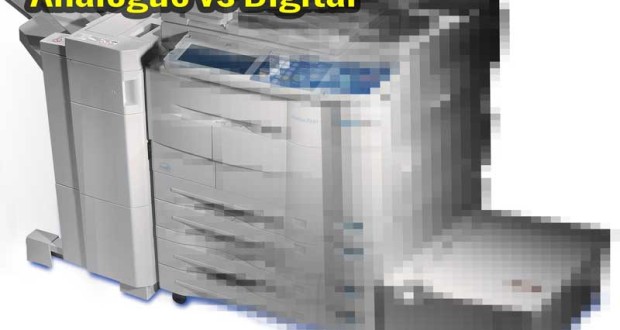For those who pay attention, there are actually analogue and digital copiers on the market today. The analogue copier was the defacto standard until digital copiers took away the limelight and offered some advanced features not previously possible with their analogue counterparts. Since there are still some analogue units flying around the market, I thought I’d take some time to explain the major differences between the two.
The Move to Digital Machines
As you might expect, the move to digital copiers is all but complete. The fact of the matter is, the analogue components are becoming more rare and the capabilities of these new digital machines cannot be ignored. Perhaps the only advantage of the analogue copier is that it’s tried and true and has the maturity to endure (it seems) longer than their digital counterparts—which seem to persevere in time with their 5-year maximum lease cycles. If you don’t need the functionality of the new digital copier, then perhaps an analogue unit may suit your needs. The rest of this article, however, will serve as notice to why these new digital machines are taking the limelight and deserve the recognition and industry takeover they’ve been given.
Capabilities That Cannot Be Ignored
OK, you can truly ignore anything—just ask one of my sons when I inquire as to the cleanliness of their room. The fact remains, however, that digital copiers excel in terms of what they offer the user. Here are just some of the features you can enjoy from a digital copier (or multifunction copier):
Copy Once, Print Many
Imagine copying a book’s worth of documents on an analogue printer. You’d have to scan one page and output it many times. If you exceed the capacity of the output tray, then you’d need to build your books in pieces. You are also unable to really interrupt the job or remove any of the documents until everything is printed. With a digital copier or multifunction device, you can scan in all of the pages of the book, and then print the pages, collated onto the output tray or sorter. You can also remove any completed copies as you go, or you could alternate the collated copies so that printing can continue until the output tray is filled or the printer runs out of paper. The only limiting factor is the storage capability of the device to retain the scanned pages during the job.
And if that’s not enough of a benefit for you, the other aspect we like about digital copiers is that, with less source scanning, you eliminate a considerable amount of noise pollution in the office. Since each document only needs to be scanned once, you aren’t having the issue of cycling back around when you run multiple copies from a single document. Once scanned, only the printing side of the machine is physically in use.
Networking is Your Friend
With a digital unit, you can connect the MFP or copier to your network and scan or print directly to and from your desktop PC. You can also do such things as scan to FTP or email and even send an Internet fax. Networked devices can use cloud-based storage and allow off-site storage of documents for later retrieval. They can also allow multiple office workers to share a print device without the need for their own unit, saving on consumables and time.
Multiple User Accounts
With digital multifunction printers and devices, you can secure your office and allocate resources better with the use of user accounts. Not all products function the same, but the ability remains for accounts that allocate and track consumables and resources so you can properly bill jobs and track inventory. Plus, you can scan to user boxes or perform other user-related activities via cloud or FTP-based storage options.
OCR and the Paperless Office Movement
With the move towards paper-free offices (which is coming along more slowly than anyone might have imagined) the ability to scan documents, extract text and properly file them is fast becoming the norm for owners of more sophisticated digital multifunction printers and copiers. National companies like Ademero are providing document management solutions that allow you to quickly scan, file and sort documents as needed. With new organization and filing requirements for HIPAA and other government and security-conscious regulatory agencies, these new features can save a lot of time and money…and believe us, anything can help!
Is there more that new digital copiers can do versus their analogue counterparts? Absolutely. But if this isn’t enough to get your wheels turning, we’re not sure what else can be said. Analogue copiers may have held the reigns for many years, but the lower costs of their digital brethren now means that the increased functionality of these new units is well within your grasp.
 CopierGuide Copier and Multifunction Printer Leases and Reviews
CopierGuide Copier and Multifunction Printer Leases and Reviews






You mentioned that with a digital copier you can scan in all of the pages of the book, and then print the pages, collated onto the output tray or sorter. Do most businesses have big machines like this in their offices? My brother is wanting to start a business out of his garage and is needing to pick out what copier he wants to use. Purchasing a digital copier could be very beneficial.